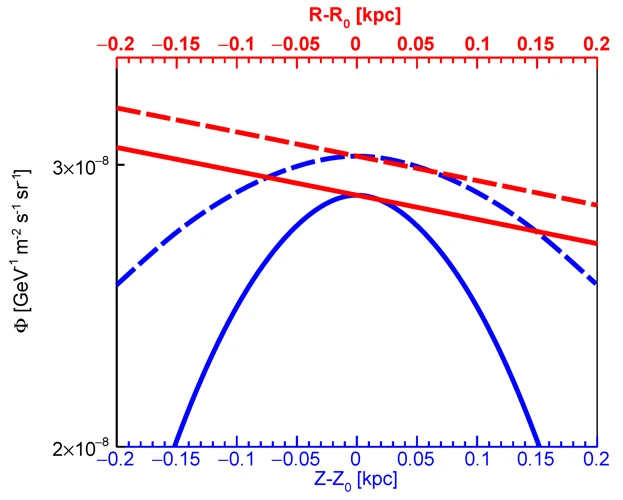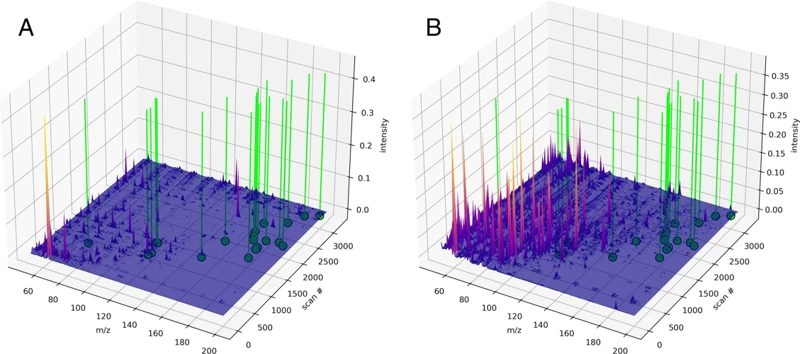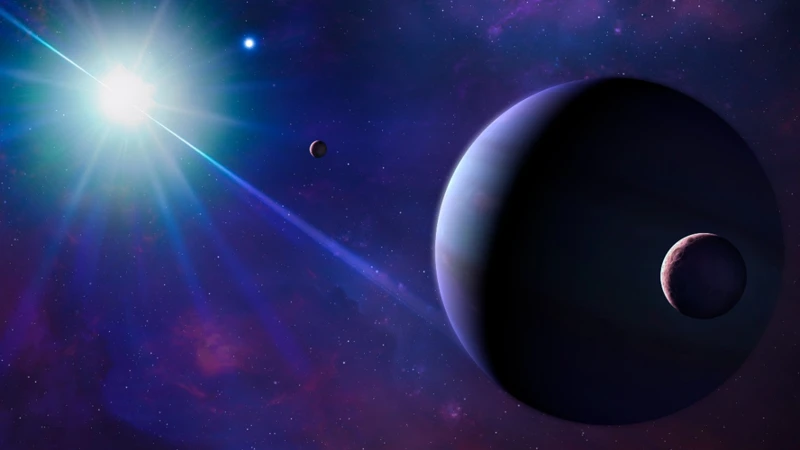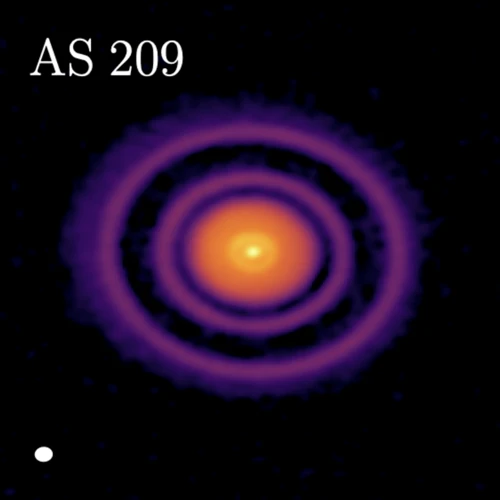Imagine a world where the skies are painted with colors we cannot even fathom, where alien atmospheres hold the secrets of distant planets. This is the realm of exoplanet atmospheres, a revolutionary field of study that has captivated scientists and stargazers alike. With advancements in technology and our insatiable curiosity, we are now able to peer into the skies of these far-flung worlds, unraveling the mysteries of their composition and potential for hosting life. In this article, we will delve into the methods used to analyze exoplanet atmospheres, explore the fascinating signatures of life known as biosignatures, discuss the classification of exoplanets based on their atmospheres, and consider the factors that influence these alien skies. So, let us embark on a cosmic journey as we unveil the secrets of exoplanet atmospheres, shedding light on the possibilities that lie beyond our own blue planet.
Contents
- Methods of Atmospheric Analysis
- Signatures of Life: Biosignatures
- Exoplanet Classification Based on Atmospheres
- Factors Affecting Exoplanet Atmospheres
- Conclusion
- Frequently Asked Questions
- References
-
Frequently Asked Questions
- 1. How do scientists study the atmospheres of exoplanets?
- 2. What is transit spectroscopy?
- 3. How does direct imaging help in studying exoplanet atmospheres?
- 4. What are secondary eclipse observations?
- 5. What are biosignatures?
- 6. Why is molecular oxygen (O2) considered a potential biosignature?
- 7. How can the presence of methane (CH4) indicate the potential for life on an exoplanet?
- 8. Why is water vapor (H2O) an important molecule to look for in exoplanet atmospheres?
- 9. What are hot Jupiters?
- 10. What are super-Earths?
- References
- Read More
The Exoplanet Revolution
The Exoplanet Revolution has completely transformed our understanding of the universe and our place within it. Not so long ago, we believed that our solar system was unique, but now we know that there are countless other star systems out there, each with their own planets orbiting them. This revelation has sparked a wave of excitement and intrigue among scientists and astronomers, as we realize that we are no longer alone in the cosmos. The discovery of exoplanets has challenged our preconceived notions and opened up a whole new realm of possibility. With each new exoplanet discovered, we gain valuable insights into the diversity of planetary systems and the potential for extraterrestrial life. The Exoplanet Revolution has brought us closer to answering one of humanity’s oldest questions: are we alone in the universe? As we continue to explore and uncover the secrets of these alien worlds, we are propelled further into the realms of imagination and wonder. With every new exoplanet found, we are reminded of the infinite possibilities that exist beyond the boundaries of our own solar system. So, let us embrace this revolution and venture into the unknown, for the exoplanet revolution is just beginning, and the mysteries of the universe await us all.
Importance of Exoplanet Atmospheres
Understanding the importance of exoplanet atmospheres is crucial in unraveling the mysteries of these distant worlds. The atmosphere of a planet plays a vital role in determining its habitability and potential for supporting life. By studying exoplanet atmospheres, scientists can gather valuable information about the planet’s composition, temperature, and the presence of key molecules that may indicate the existence of life. The interactions between an exoplanet’s atmosphere and its host star also provide insights into the planet’s overall climate and weather patterns. Additionally, exoplanet atmospheres can help us understand the processes that shape planetary formation and evolution. The study of exoplanet atmospheres allows us to expand our knowledge of the universe, pushing the boundaries of what we know and igniting our curiosity to explore further. By exploring the atmospheres of these alien worlds, we inch closer to unraveling the enigma of life beyond Earth, and the potential for discovering truly remarkable and unexpected phenomena. The significance of exoplanet atmospheres cannot be understated, as they hold the key to unlocking the secrets of our place in the cosmos, and the endless possibilities that lie within.
Methods of Atmospheric Analysis

Methods of Atmospheric Analysis play a crucial role in unraveling the mysteries of exoplanet atmospheres. One such method is Transit Spectroscopy, which involves observing a planet as it passes in front of its host star. By analyzing the starlight that passes through the planet’s atmosphere, scientists can identify the presence of different molecules and elements. This technique provides valuable information about the composition and temperature of the exoplanet’s atmosphere. Another method, Direct Imaging, relies on advanced telescopes and imaging techniques to capture actual images of exoplanets. This allows scientists to study the atmospheres of these distant worlds by observing how the light from the host star interacts with the planet’s atmosphere. Additionally, Secondary Eclipse Observations provide insights into exoplanet atmospheres. During a secondary eclipse, astronomers observe changes in the light emitted by an exoplanet as it moves behind its host star. This allows them to measure the planet’s thermal emission and infer the composition of its atmosphere. Each of these methods offers a unique perspective on exoplanet atmospheres, enabling scientists to piece together the complex puzzle of these alien skies. With ongoing advancements in technology and the refinement of these analytical methods, we are poised to uncover even more secrets about the atmospheres of exoplanets. So, let us continue to delve deeper into the cosmos, using these innovative methods to unlock the secrets of alien skies.
Transit Spectroscopy
Transit Spectroscopy is one of the most powerful techniques used in the analysis of exoplanet atmospheres. It involves observing a planet as it passes in front of its host star, known as a transit, and analyzing the changes in light that occur during this event. By studying the spectrum of light emitted or absorbed by the exoplanet’s atmosphere, scientists can make valuable inferences about its composition and properties. The process begins by measuring the light emitted by the star both with and without the presence of the planet. The two spectra are then compared, and any variations indicate the presence of certain molecules in the exoplanet’s atmosphere. This technique has been instrumental in the detection of various compounds, including water vapor, methane, and molecular oxygen, which are key indicators of potential habitability. Transit Spectroscopy has allowed us to decipher the chemical makeup of exoplanet atmospheres, providing clues about their formation and evolution. It’s worth noting that this technique has its limitations, as it requires precise alignment and favorable conditions for successful observations. Nonetheless, Transit Spectroscopy has played a major role in advancing our understanding of exoplanet atmospheres and bringing us closer to answering the age-old question of whether we are alone in the universe. For more on the topic of exoplanets, you may be interested in exploring the music and songs inspired by the Ophiuchus constellation.
Direct Imaging
Direct imaging is a powerful technique used in the analysis of exoplanet atmospheres. Unlike transit spectroscopy, which relies on observing the decrease in a star’s brightness as a planet passes in front of it, direct imaging involves capturing actual images of exoplanets. This method is particularly useful for studying larger, more massive exoplanets that are farther away from their host stars. By directly observing the light emitted or reflected by these exoplanets, scientists can analyze their atmospheres and search for signs of molecules that could indicate the presence of life.
Direct imaging typically involves using advanced telescopes equipped with adaptive optics systems to correct for the distortion caused by Earth’s atmosphere. By removing atmospheric interference, astronomers are able to obtain clearer and more detailed images of exoplanets. These images can reveal important information about the composition and temperature of an exoplanet’s atmosphere.
One notable success in direct imaging is the discovery of HR 8799, a star system located approximately 128 light-years away. Four massive exoplanets were imaged directly, each of them several times the mass of Jupiter. These observations provided valuable insights into the atmospheres of these massive gas giants, helping scientists understand the range of conditions that can exist on exoplanets.
It is important to note that direct imaging is a challenging technique due to the extreme contrast between the brightness of a star and the relatively dim light from an orbiting planet. Additionally, the distance of exoplanets from their host stars increases the difficulty of capturing their images. Nevertheless, advancements in technology and the development of innovative observing techniques continue to improve our ability to perform direct imaging and unravel the secrets held within exoplanet atmospheres.
Direct imaging offers a unique and fascinating approach to studying exoplanet atmospheres. By capturing images of these distant worlds, scientists can gain valuable insights into their composition and potentially detect molecules that could be indicative of life. The continued refinement of direct imaging techniques holds the promise of exciting discoveries and a deeper understanding of the incredible diversity of exoplanetary systems.
Source: /story-ragnarok-end-norse-gods/
Secondary Eclipse Observations
Secondary eclipse observations are a powerful method used in the analysis of exoplanet atmospheres. During a secondary eclipse, a planet passes behind its host star as seen from Earth. This event allows astronomers to study the change in brightness and spectral characteristics of the system. By observing the differences in the light emitted by the star before, during, and after the secondary eclipse, scientists can gain valuable insights into the composition and properties of the exoplanet’s atmosphere. This technique is particularly useful for detecting the presence of molecules such as water vapor, carbon dioxide, and methane in the exoplanet’s atmosphere. By deciphering the molecular fingerprints left in the star’s light, researchers can piece together a detailed profile of the exoplanet’s atmosphere and even investigate the possibility of habitability. Secondary eclipse observations not only provide a deeper understanding of exoplanet atmospheres but also offer clues about the potential for life beyond our own solar system. As astronomers continue to refine their techniques and develop more advanced instruments, secondary eclipse observations will play a crucial role in unraveling the secrets of these alien skies. To further explore the fascinating world of astrology, you can read our article on predicting financial prosperity through astrological aspects.
Signatures of Life: Biosignatures

Signatures of Life: Biosignatures are the clues we seek to find evidence of life beyond Earth. These distinctive markers, found within the atmospheres of exoplanets, can provide valuable insights into the potential habitability and existence of life in these alien worlds. One key biosignature is molecular oxygen (O2), which is commonly associated with photosynthesis on Earth. The presence of molecular oxygen in an exoplanet’s atmosphere could suggest the presence of plant life or other biological processes. Another important biosignature is methane (CH4), which can be produced by certain microorganisms. The detection of methane in an exoplanet’s atmosphere could indicate the presence of microbial life. Additionally, water vapor (H2O) is a significant biosignature, as water is essential for life as we know it. The detection of water vapor can provide insights into the potential habitability of an exoplanet. These biosignatures are not definitive proof of life, but they offer tantalizing hints that drive scientific exploration and further investigation. As technology advances, our ability to detect and analyze these biosignatures will improve, bringing us closer to unraveling the mysteries of alien life in the cosmos.
Molecular Oxygen (O2)
Molecular Oxygen (O2) is one of the key biosignatures that scientists look for when studying exoplanet atmospheres. On Earth, molecular oxygen is produced primarily through biological processes, such as photosynthesis. The detection of O2 in an exoplanet’s atmosphere could indicate the presence of life. However, it’s important to note that other non-biological processes can also produce molecular oxygen, such as photochemistry and high-energy reactions.
The search for O2 in exoplanet atmospheres is primarily conducted using transit spectroscopy. This technique involves studying the changes in starlight as the exoplanet passes in front of its host star from our point of view. By analyzing the way light interacts with the exoplanet’s atmosphere, scientists can identify the presence and concentration of different molecules, including O2.
One of the challenges in detecting O2 is distinguishing it from false positives, such as ozone (O3) or carbon dioxide (CO2). Both O3 and CO2 can produce spectral features that may be mistaken for O2. To overcome this, scientists combine observations at multiple wavelengths and carefully analyze the data to ensure accurate identification.
In the future, advancements in telescopes and technology, such as the upcoming James Webb Space Telescope, will further enhance our ability to detect and study O2 and other biosignatures. This will bring us closer to answering the age-old question of whether life exists beyond our own planet.
The detection of molecular oxygen (O2) in exoplanet atmospheres is a crucial step in the search for extraterrestrial life. By using transit spectroscopy and advanced analysis techniques, scientists aim to differentiate O2 from other molecules and confirm its presence. Continued research and technological advancements will play a vital role in unraveling the secrets of exoplanet atmospheres and potentially finding signs of life beyond Earth.
Methane (CH4)
Methane (CH4) is a crucial component in the study of exoplanet atmospheres. It is an organic molecule composed of one carbon atom bonded to four hydrogen atoms. On Earth, methane is predominantly produced by biological processes, such as the digestive systems of animals and the decay of organic matter. However, when it comes to exoplanets, the presence of methane can have diverse origins. It can be produced through both biological and abiotic processes. The detection of methane in an exoplanet’s atmosphere can provide valuable insights into its potential habitability and the presence of life. Methane is considered a potential biosignature, as its presence in combination with other molecules, such as oxygen or ozone, could indicate the existence of life. However, it is important to note that the presence of methane alone does not guarantee the presence of life, as abiotic processes can also produce this molecule. Scientists carefully analyze the composition and context of exoplanet atmospheres to determine the source of methane and its significance. Understanding the role of methane in exoplanet atmospheres is a stepping stone towards unraveling the mysteries of these alien worlds and the possibility of life beyond our own planet.
Water Vapor (H2O)
Water vapor (H2O) plays a crucial role in the study of exoplanet atmospheres and the search for extraterrestrial life. It is a compound that exists in various forms and is essential for the existence of life as we know it. On Earth, water vapor is present in our own atmosphere, contributing to weather patterns and the water cycle. Similarly, the detection of water vapor in exoplanet atmospheres can provide valuable insights into their potential habitability.
By analyzing the spectra of exoplanet atmospheres, scientists are able to detect the presence of water vapor. This is done through a technique called transit spectroscopy, which involves observing the changes in light as a planet passes in front of its host star. When water vapor absorbs certain wavelengths of light, it creates distinct absorption lines in the spectrum. These absorption lines serve as a fingerprint, allowing scientists to identify the presence of water vapor and estimate its abundance in the atmosphere of an exoplanet.
The detection of water vapor in an exoplanet’s atmosphere is significant because it signifies the presence of a key ingredient for life as we know it. Water is essential for the development and sustainability of life forms on Earth, and its presence on other planets increases the possibility of habitability. Additionally, water vapor can also indicate the existence of a water cycle or the presence of liquid water on the planet’s surface.
The study of water vapor in exoplanet atmospheres helps scientists understand the planet’s climate and atmospheric dynamics. The distribution and concentration of water vapor can provide insights into the temperature, pressure, and overall composition of an exoplanet’s atmosphere. This information is vital for determining the planet’s habitability and its potential to support life.
In the search for extraterrestrial life, the detection of water vapor is a significant step. While it does not guarantee the presence of life, it is a key indicator of habitability. The discovery of exoplanets with water vapor in their atmospheres fuels our curiosity and motivates further exploration of potentially life-supporting worlds.
Water vapor (H2O) serves as a valuable marker in the study of exoplanet atmospheres. Its detection through transit spectroscopy provides insights into the habitability and potential for life on exoplanets. As we continue to unveil the secrets of exoplanet atmospheres, the presence of water vapor brings us one step closer to unraveling the mysteries of the universe and discovering whether we are truly alone.
Exoplanet Classification Based on Atmospheres

Exoplanet classification based on atmospheres is an essential tool in understanding the diverse array of exoplanets that exist beyond our own solar system. By analyzing the composition and characteristics of exoplanet atmospheres, scientists can categorize these distant worlds into different classifications. One such classification is that of “Hot Jupiters,” exoplanets that resemble our own gas giant, Jupiter, but orbit much closer to their host star. These hot Jupiters have atmospheres that are heated to extreme temperatures, causing them to exhibit unique and dynamic features. Another classification is “Super-Earths,” exoplanets that are larger than Earth but smaller than Neptune. Super-Earths have a wide range of atmospheres, including thick gas atmospheres or even water-dominated atmospheres. Finally, exoplanets in the “Habitable Zone,” also known as the Goldilocks zone, are those that have the potential to support liquid water and potentially life as we know it. This classification is of particular interest to scientists as they search for habitable exoplanets and signs of extraterrestrial life. By categorizing exoplanets based on their atmospheres, we can gain valuable insights into their composition, structure, and potential for hosting life. It is through this classification system that we can begin to unravel the mysteries of these distant alien worlds and expand our understanding of the universe.
Hot Jupiters
Hot Jupiters are a unique class of exoplanets that have captivated scientists since their discovery. These gas giants, similar in size to our own Jupiter, orbit their host stars at incredibly close distances, often completing one orbit in just a few days. The defining characteristic of Hot Jupiters is their scorching temperatures, as they are located in close proximity to their host star. Their extreme heat results in fascinating atmospheric conditions that differ greatly from those of other types of exoplanets.
Hot Jupiters have atmospheres that are drastically different from our own solar system’s gas giants. These exoplanets possess atmospheres with high temperatures, often exceeding thousands of degrees Celsius. The intense heat causes their outer atmospheres to expand, creating puffy and extended atmospheres that extend far beyond the planet’s core. This expansion is due to the intense heat from their close proximity to the host star and the heating effects of their own internal energy sources.
One of the striking characteristics of Hot Jupiters is their ability to retain a significant amount of heat. Unlike Jupiter in our own solar system, which primarily reflects sunlight, Hot Jupiters absorb and retain a significant portion of the energy they receive from their host star. This retained energy contributes to the extreme temperatures that make these exoplanets truly unique.
Hot Jupiters also exhibit interesting atmospheric phenomena such as intense cloud formations and strong winds. The high temperatures and close proximity to their host stars create atmospheric conditions where exotic compounds can form, including titanium oxide and vanadium oxide. These compounds give Hot Jupiters their distinct colors and may contribute to the formation of colorful clouds in their atmospheres.
The study of Hot Jupiters provides valuable insights into the dynamics of planetary systems. Their close orbits challenge our understanding of planet formation and migration, as it is unlikely that they formed in such close proximity to their host stars. Their presence has raised questions about the migration of planets within their systems and the potential influence of gravitational interactions with other planets or even passing stars.
Hot Jupiters are a fascinating class of exoplanets known for their extreme temperatures and unique atmospheric conditions. Their close orbits and scorching temperatures provide valuable opportunities for scientific exploration and help us unravel the complexities of planetary systems beyond our own. By studying these alien worlds, we gain a deeper understanding of the diverse range of planetary structures and processes that exist in the universe.
Super-Earths
Super-Earths are a fascinating class of exoplanets that have captured the attention of scientists and astronomers. These planets are larger than Earth but smaller than gas giants like Jupiter. With sizes ranging from about 1.5 to 2 times that of Earth, super-Earths offer a unique opportunity to study planetary structures that lie between rocky planets and gas giants. The composition of super-Earths is still a subject of debate. Some may have a rocky core surrounded by a thick atmosphere, while others might have a significant amount of water or even a layer of ice.
One of the intriguing aspects of super-Earths is their potential for hosting liquid water, a crucial ingredient for life as we know it. While the surface conditions of super-Earths can vary greatly depending on factors such as distance from the host star and atmospheric composition, some of these planets may exist within the habitable zone, where the conditions could be just right for liquid water to exist. With the discovery of super-Earths in the habitable zone, scientists are eager to investigate the possibility of these planets harboring life.
One particularly intriguing example is the exoplanet K2-18b, located about 110 light-years away. K2-18b is a super-Earth that resides in its star’s habitable zone and has been found to have an atmosphere containing water vapor. This discovery is significant as it marks the first detection of water vapor in the atmosphere of a planet within the habitable zone.
Studying the atmospheres of super-Earths can provide valuable insights into their volatile composition and atmospheric properties. Techniques such as transit spectroscopy, which involves analyzing the change in starlight as a planet passes in front of its host star, can help scientists determine the presence of gases such as hydrogen, helium, and heavier molecules like carbon dioxide and methane. These observations aid in characterizing the potential habitability of super-Earths and understanding the processes that shape their atmospheres.
Super-Earths represent an intriguing class of exoplanets that bridge the gap between rocky planets and gas giants. Their sizes and compositions offer unique opportunities for scientists to study the diversity of planetary structures in the universe. Investigating the atmospheres of super-Earths, particularly those within the habitable zone, can provide insights into their potential for supporting life. With ongoing advancements in observational techniques and future missions dedicated to studying exoplanet atmospheres, we are poised to unveil the secrets of these enigmatic worlds and expand our understanding of the possibilities that lie beyond our own Earth.
Exoplanets in the Habitable Zone
Exoplanets in the Habitable Zone, also known as “Goldilocks planets,” are the ones that reside in the just-right distance from their host star, where conditions could potentially support liquid water on their surfaces, a vital ingredient for life as we know it. These planets orbit within a region where it is neither too hot nor too cold, making them prime candidates for the existence of habitable environments. One such example is the exoplanet Kepler-186f, located approximately 500 light-years away from Earth. It is a rocky planet, just slightly larger than Earth, and it orbits within the habitable zone of its star. The discovery of such planets has sparked immense interest and excitement in the scientific community, as they offer the tantalizing possibility of finding extraterrestrial life. Scientists use various methods to identify these habitable exoplanets, including the transit method and radial velocity measurements. Through these observations, astronomers can determine whether these planets are within the habitable zone and gather data about their composition and atmosphere. The exploration of exoplanets in the habitable zone has the potential to revolutionize our understanding of the universe and shape our views on the existence of life beyond Earth. As technology advances and our knowledge deepens, we may one day discover a distant world that not only resides in the habitable zone but also harbors the building blocks of life itself.
Factors Affecting Exoplanet Atmospheres

Factors Affecting Exoplanet Atmospheres are crucial in determining the composition and characteristics of these distant worlds. One major factor is the distance from the host star. The proximity of an exoplanet to its star can greatly influence its atmosphere. Planets located close to their star, known as “hot Jupiters,” experience intense heat, causing their atmospheres to expand and become inflated. In contrast, exoplanets located farther away may have colder atmospheres with different chemical compositions. Another influential factor is the planet’s composition and volcanic activity. The composition of an exoplanet, whether it is rocky like Earth or gaseous like Jupiter, plays a significant role in shaping its atmosphere. Volcanic activity on these worlds can release gases and particles into the atmosphere, further altering its composition and potentially affecting the planet’s habitability. Additionally, the host star’s activity can impact an exoplanet’s atmosphere. Stellar flares and intense radiation can erode or strip away an exoplanet’s atmosphere over time. These various factors work in concert to shape and determine the unique atmospheres of exoplanets, showcasing the intricate interplay between celestial bodies and their surroundings. Understanding these factors allows us to gain insights into the evolution and diversity of exoplanet atmospheres, providing us with valuable knowledge as we continue to push the frontiers of exoplanet exploration.
Distance from the Host Star
The distance from the host star plays a crucial role in the formation and composition of exoplanet atmospheres. This factor determines the temperature of the planet and the types of gases that can exist in its atmosphere. Close-in exoplanets, such as “Hot Jupiters,” orbit very close to their host star, resulting in scorching temperatures. The intense heat causes their atmospheres to expand and can even lead to the escape of atmospheric gases. On the other hand, exoplanets in the habitable zone, also known as the “Goldilocks zone,” are located at an optimal distance from their star where liquid water could exist on the surface. This distance allows for moderate temperatures, making it more likely for life-friendly conditions to emerge. The proximity to the host star also affects the amount of stellar irradiation that an exoplanet receives. This irradiation can trigger complex chemical reactions in the atmosphere, leading to the formation of different molecules and influencing the overall composition. The distance from the host star is a fundamental factor that shapes the characteristics and potential habitability of exoplanet atmospheres. It is through understanding the unique conditions brought about by this parameter that we can further unravel the secrets of the skies of these distant worlds.
Planet Composition and Volcanic Activity
The composition of a planet and its volcanic activity are two key factors that greatly influence its atmosphere. The type and abundance of elements present on a planet determine the gases that make up its atmosphere, while volcanic activity plays a crucial role in replenishing and modifying the composition of these gases over time. The composition of a planet is determined by its formation and subsequent evolution. Planets can be composed of rock, gas, or a combination of both. Rocky planets, like Earth, have a dense and solid surface made up of elements such as iron, silicon, and oxygen. These elements heavily influence the composition of the planet’s atmosphere. In contrast, gas giants, like Jupiter, are composed primarily of hydrogen and helium, with trace amounts of other elements. The presence of certain elements in a planet’s atmosphere can have profound effects on its habitability and potential for life. For example, the presence of carbon dioxide (CO2) in a planet’s atmosphere can create a greenhouse effect, trapping heat and potentially making the planet too hot for life to exist. On the other hand, the presence of water vapor (H2O) is a key ingredient for the development and sustenance of life as we know it. In addition to planet composition, volcanic activity also plays a crucial role in shaping a planet’s atmosphere. Volcanic eruptions release gases and particles into the atmosphere, including carbon dioxide, sulfur dioxide, and water vapor. These volcanic gases can alter the atmospheric composition, affecting the climate and potentially creating hospitable conditions for life. In some cases, volcanic activity can even lead to the formation of secondary atmospheres, where gases released from volcanic activity dominate the composition of the planet’s atmosphere. One example of this is Io, one of Jupiter’s moons, which has a sulfur-rich atmosphere due to its intense volcanic activity. Understanding the composition of a planet and the role of volcanic activity is vital in deciphering the mysteries of exoplanet atmospheres and their potential for harboring life. Through ongoing research and exploration, scientists aim to unravel the complex relationship between planet composition, volcanic activity, and the atmospheric conditions that shape these alien worlds.
Conclusion

In conclusion, the study of exoplanet atmospheres has revolutionized our understanding of the universe and our search for extraterrestrial life. Through methods such as transit spectroscopy, direct imaging, and secondary eclipse observations, scientists have been able to analyze the composition and characteristics of these alien skies. The detection of biosignatures such as molecular oxygen, methane, and water vapor holds the potential for identifying habitable and potentially inhabited exoplanets. Furthermore, the classification of exoplanets based on their atmospheres, such as hot Jupiters, super-Earths, and those in the habitable zone, provides valuable insights into the diversity of planetary systems. Factors such as the distance from the host star and planet composition, including volcanic activity, also play a crucial role in shaping exoplanet atmospheres. As we continue to delve into the secrets of exoplanet atmospheres, our understanding of the cosmos expands, and the possibilities for finding life beyond Earth become increasingly within reach. This journey of exploration and discovery is only just beginning, and with each new revelation, we come closer to unraveling the mysteries of the alien skies. So, let us continue to gaze into the cosmos with wonder and anticipation, for the secrets of exoplanet atmospheres await us, inviting us to unlock the hidden treasures of the universe.
Frequently Asked Questions

FAQs about Exoplanet Atmospheres
1. Are exoplanets similar to planets in our solar system?
While some exoplanets may have similarities to planets in our solar system, the vast majority exhibit unique characteristics and compositions that distinguish them from familiar planets like Earth or Mars.
2. How do scientists detect exoplanet atmospheres?
Scientists use various methods such as transit spectroscopy, direct imaging, and secondary eclipse observations to detect and analyze exoplanet atmospheres. These techniques allow for the identification of different gases and molecules present in the atmospheres.
3. Can we determine if an exoplanet has an atmosphere?
Yes, by observing an exoplanet during a transit event, scientists can analyze the changes in the star’s light as it passes through the planet’s atmosphere, providing valuable information about its composition.
4. Why are exoplanet atmospheres important?
Exoplanet atmospheres provide valuable insights into the planet’s formation, evolution, and potential habitability. They can also give us clues about the presence of life or biosignatures on these distant worlds.
5. What are biosignatures?
Biosignatures are molecular or atmospheric features that indicate the presence of life on a planet. Examples include the detection of molecular oxygen (O2), methane (CH4), and water vapor (H2O) in an exoplanet’s atmosphere.
6. How do exoplanet atmospheres affect the potential for habitability?
Exoplanet atmospheres play a crucial role in determining a planet’s habitability. Factors such as the presence of greenhouse gases, the amount of water vapor, and the stability of the atmosphere can all influence a planet’s ability to support life as we know it.
7. Can we classify exoplanets based on their atmospheres?
Yes, scientists categorize exoplanets into different classes based on their atmospheric compositions. This classification helps in understanding the diversity of exoplanets and identifying potential targets for future exploration.
8. What factors can affect an exoplanet’s atmosphere?
The distance from the host star, the planet’s composition, and volcanic activity are some of the factors that can influence the composition and stability of an exoplanet’s atmosphere.
9. Can we directly observe the surface of an exoplanet?
Directly observing the surface of an exoplanet is currently challenging due to the distances involved. However, advancements in technology may eventually allow us to gather more detailed information about exoplanet surfaces.
10. How has the discovery of exoplanet atmospheres impacted our understanding of the universe?
The discovery of exoplanet atmospheres has revolutionized our understanding of the universe by providing evidence of the incredible diversity and potential for life beyond our solar system. It has ignited new avenues of research and fueled our curiosity to explore these alien worlds.
References
- The Scientist Who Cooks Up the Skies of Faraway Worlds
- Newfound ‘Super-Earth’ exoplanets bear clues about …
Frequently Asked Questions

1. How do scientists study the atmospheres of exoplanets?
Scientists study the atmospheres of exoplanets using various methods such as transit spectroscopy, direct imaging, and secondary eclipse observations.
2. What is transit spectroscopy?
Transit spectroscopy is a method used to study exoplanet atmospheres by analyzing the changes in the star’s light as the planet passes in front of it. This allows scientists to detect and analyze the chemical composition of the planet’s atmosphere.
3. How does direct imaging help in studying exoplanet atmospheres?
Direct imaging involves capturing images of exoplanets directly. By analyzing the light reflected or emitted by the planet, scientists can determine its atmospheric composition and even search for signs of life.
4. What are secondary eclipse observations?
Secondary eclipse observations involve detecting the decrease in the brightness of a star as an exoplanet passes behind it. This allows scientists to analyze the composition and temperature of the planet’s atmosphere.
5. What are biosignatures?
Biosignatures are signs or indicators that suggest the presence of life on an exoplanet. These can include the presence of certain molecules such as molecular oxygen (O2), methane (CH4), or water vapor (H2O).
6. Why is molecular oxygen (O2) considered a potential biosignature?
Molecular oxygen is considered a potential biosignature because it is produced by living organisms on Earth through photosynthesis. Detecting high levels of O2 in an exoplanet’s atmosphere suggests the presence of photosynthetic activity, which could indicate the existence of life.
7. How can the presence of methane (CH4) indicate the potential for life on an exoplanet?
On Earth, methane is produced by both geological processes and living organisms. Detecting methane in the atmosphere of an exoplanet could indicate the presence of either volcanic activity or biological activity, making it a potential biosignature.
8. Why is water vapor (H2O) an important molecule to look for in exoplanet atmospheres?
Water vapor is essential for life as we know it. The presence of water vapor in an exoplanet’s atmosphere can indicate the potential for liquid water on its surface, which is a key ingredient for the development of life.
9. What are hot Jupiters?
Hot Jupiters are a type of exoplanet that are similar in size to Jupiter but orbit much closer to their host stars. Due to their proximity to the star, their atmospheres can reach extremely high temperatures, making them an interesting study subject.
10. What are super-Earths?
Super-Earths are exoplanets that have a larger mass and size compared to Earth but smaller than gas giants like Jupiter. Their atmospheres can vary widely, and studying them helps scientists understand the range of atmospheric compositions in exoplanets.







